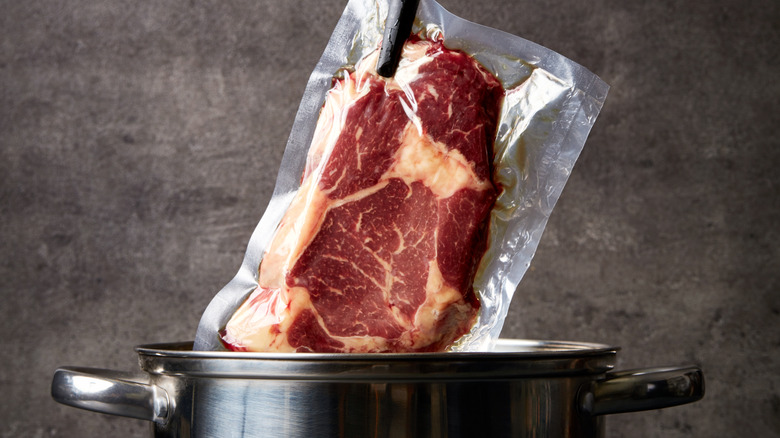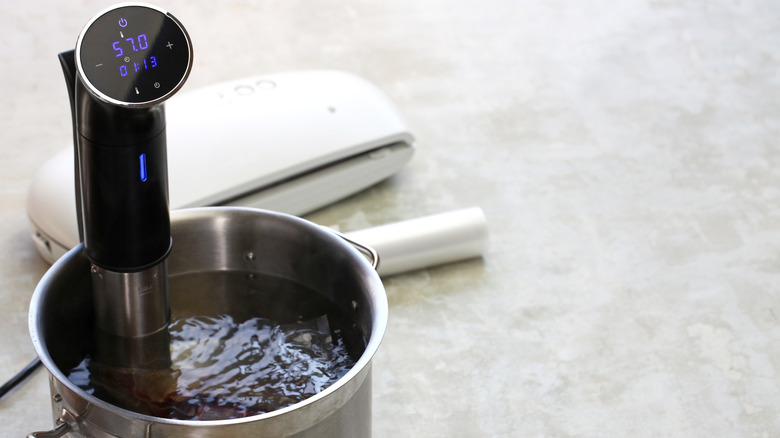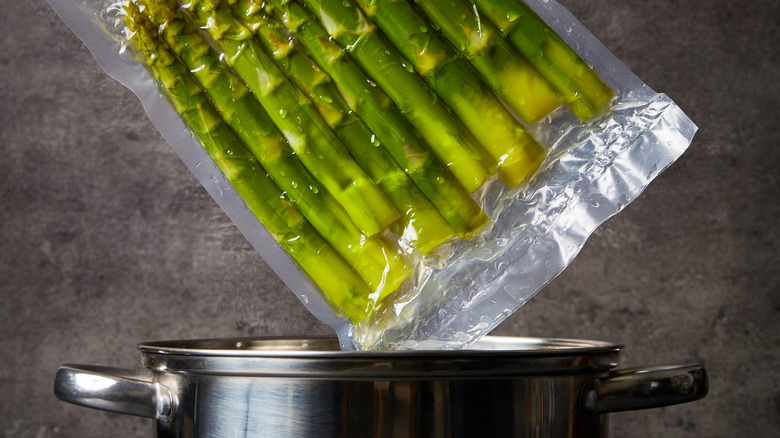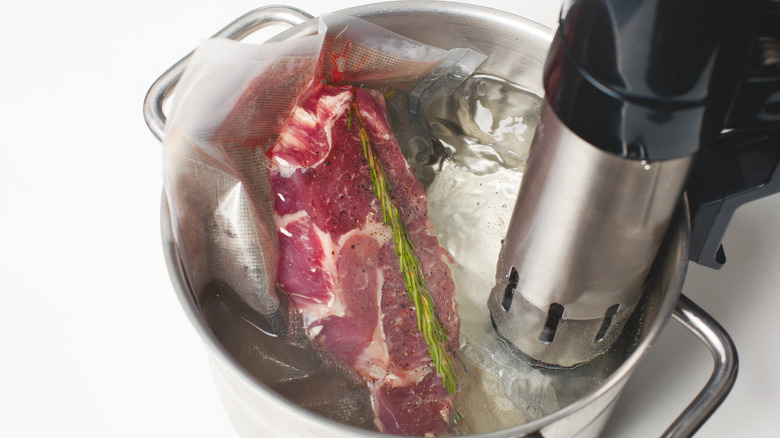Should You Really Try Sous Vide?
Professional cooking methods are no longer limited to the stainless steel confines of the five-star kitchen. With equipment offered to most professional chefs now available and adapted for at-home use, and many of us coming out of quarantine with newly-sharpened skills in poaching, searing, and making our own sourdough, what's stopping our next foodie endeavor?
Sous vide is a popular method used in restaurant kitchens around the world. What exactly the process entails we'll get into below, but know this — what was once only achievable in an industrial kitchen with pre-packaged food can now be done at home with a vacuum sealer, an immersion circulator, or even the newer models of the Instant Pot.
However, just because something can be done at home doesn't mean it should be. We lay it all out for you below, and you can make up your mind on if you should try sous vide in your kitchen, or if sticking to more conventional methods is better.
What is sous vide?
Sous vide is a method chefs use to create a balanced, consistent temperature to thoroughly saturate the item that they're cooking. According to Food & Wine, sous vide is a French word that translates to "under vacuum," which makes sense. It requires vacuum-sealing the product, whether that be a salmon filet or steak cut, and immersing it in a water bath at a very precise temperature.
At-home sous vide appliances come in various shapes and sizes. The most minimal tool would likely be this immersion circulator from Anova, which clamps to the side of a pot and heats and circulates water. Other options include bulkier countertop water baths or the many DIY hacks out there that rely on rice cookers and Instant Pots.
Though prepackaged, vacuum-sealed food products are often used in restaurant kitchens, you can reach sous vide success with air-tight Ziploc bags, canning jars, and even reusable silicone bags. Sounds simple enough, right? Sous vide is totally accessible at home, but you be the judge on whether or not it has a place in your cooking routine.
Advantages of sous vide cooking
The main reason that chefs use the sous vide method is to maintain a consistent cook on whatever it is they're preparing, so that they get the same results each time. Compare this to using a pan on the stove. If you're cooking a steak, hot spots on the stove can cook some parts of the cut faster than others. There's no need to worry about this when cooking sous vide — the filet is submerged in the same temperature the whole time.
The sous vide method also allows food to retain much of its natural form, per Home Kitchen Talk. Vegetables, which often lose color with other cooking methods, stay vibrant. Meat doesn't shrink and maintains close to the original volume it possessed before cooking. Avoiding high-temperature cooking methods also eliminates the need to add additional oils or fats, keeping meals, generally, on the healthier side. Cooking sous vide is a low and slow process, meaning that healthy fats and nutrients won't be completely broken down — or proteins overheated — with abrasive high heat, which retains moisture and flavor.
Disadvantages of sous vide
Like any cooking method, there are downsides to sous vide, namely the preparation and time required.
With using an oven, grill, or stovetop, a steak can go from the fridge to your plate in about 20 minutes. That's not the case with sous vide. Depending on the cut, steak needs anywhere from 45 minutes to three hours (via Serious Eats). The water bath needs to preheat, too, adding in some extra time. If you're a meal prepper with limited time, this method doesn't make much sense.
Critics also bash sous vide for taking the actual cooking experience out of cooking (via The Guardian). Traditionally, cooking relies on touch, feel, taste and timing. For many, it's a talent. Zipping a piece of salmon up in a Ziploc bag and letting it sit in a heated water bath completely avoids the sensory experience and hands-on process of cooking. In a restaurant setting, it makes sense to want to deliver a consistently product plate after plate. But for the home cook, sous vide offers minimal excitement.
Still, it all comes down to personal preference. There really isn't a need for sous vide at home, but the sole reason of wanting to try a new preparation method is still worth something. If this sounds like the next cooking trick you want to try, by all means do it. The end result will likely be high quality and your palate will thank you, just prepare to be underwhelmed by the process.



